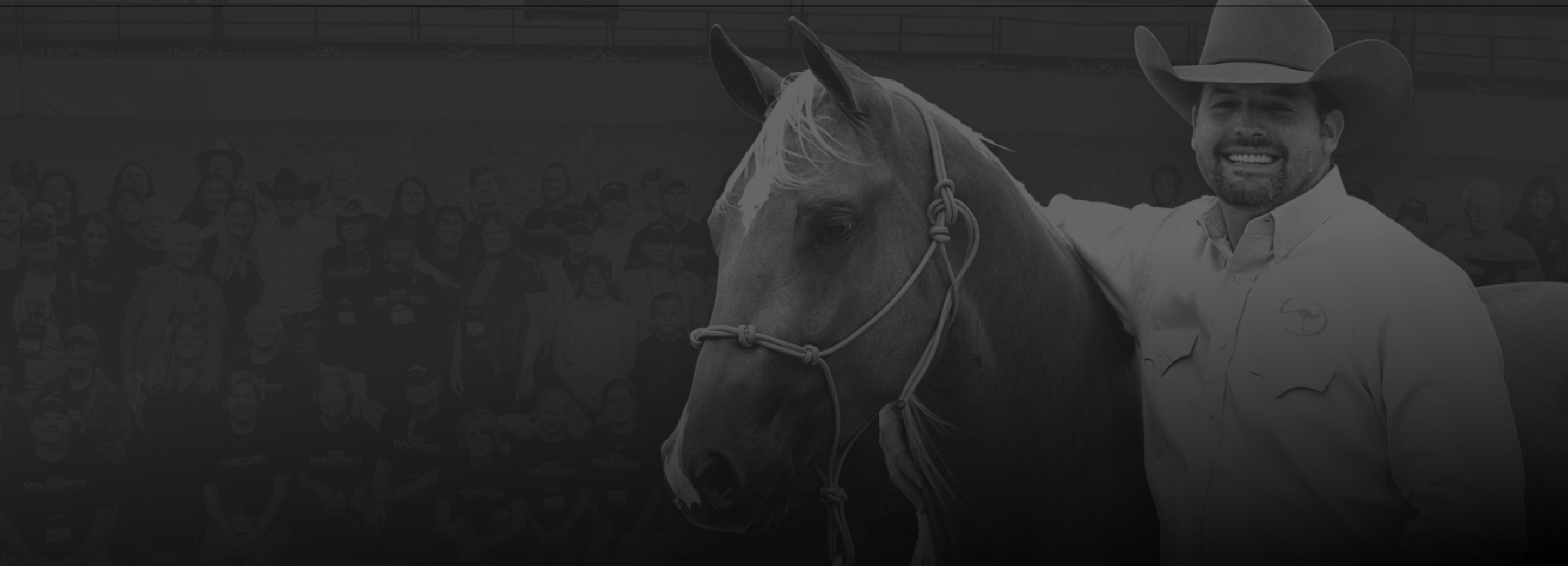Clinton Anderson from Downunder Horsemanship has developed a way to train horses, regardless of their past problems or traumas. It begins with training the owners to gain their horses’ respect and understand how to control them properly. Join Clinton on his weekly endeavors to tackle some of the most challenging situations with problem horses and problem owners. This week, we watch as Clinton tells us how to train your horse to confront spooky objects that don’t move.
Horses that are easily spooked can lose control, which is a recipe for dangerous situations. Instead of hoping for the best, it’s important to stay in control of the situation by helping your horse overcome their fear and build their confidence. There’s one approach for desensitizing your horse to objects that move, which Clinton covered in his previous No Worries Club lessons. However, the same technique doesn’t apply to objects that stay still.
So, if your spooky object doesn’t move, like an old burnout cart on the trail or a rock that seems to scare your horse, there are a few things you can do. Clinton works with Professional Clinician Jeff Davis who is riding an Arabian horse that’s a bit reactive.
The first step in desensitization is to just confront the object by going around it and turning into it. You can give your horse a wide margin around the object, slowly getting closer. But, if you don’t have the space to go around it, you can also perform rollbacks on one side of it. For this demonstration, there’s plenty of space, so Clinton has Jeff do a big circle around the object. Always start off big because the more frightened a horse is of the object, the less likely it is that they’re going to want to get up close to it. As Jeff does the circling, Clinton tells him to start turning into it to get his horse using the thinking side of the brain. This is a standard technique that can help in several situations. Clinton advises Jeff to get as close to the object as he can, as long as he can still maintain control and it’s not dangerous. Clinton says that this is a great starting point because it gets the horse to focus on you and how you’re asking him to move his feet.
Jeff continues to perform these exercises with his horse and starts adding more and more turns. If the horse cuts the corner too much, Clinton advises Jeff to turn him out. Eventually, you’ll get closer and closer to the object as the horse gets used to it and realizes it’s not a threat. When your horse starts to find a bit more rhythm and you get more control of his feet, you want to slowly make the circle smaller. Now, some horses might slow down during this exercise, which is OK, but it will take a bit longer. The trick is to get as close as you can to the object while maintaining control and safety. That’s step one.
The key is repeating this over and over, tightening the circle but still being responsive to your horse and reading the situation. You want to circle the object, turn, circle, and turn until your horse starts using the thinking side of his brain then keep toning the movements. You’ll always turn in unless your horse cuts the corner and puts you in a dangerous situation. Then you’ll want to turn out and let your horse trot to avoid problems. But 99% of the time, turn in.
At the end of the exercise, you want to reward your horse with his most valuable commodity—resting and getting his air. So just leave him in a safe position next to the object that allows him to get some air, and if he’s still acting spooked by the object, continue integrating the exercise into your daily training.
To learn more about the Downunder Horsemanship training method, become a member of the No Worries Club, or get information on any of the products featured on our show, visit our homepage and download the Downunder Horsemanship app today!

Master Your horsemanship Skills
Like these tips? Join the No Worries Club and hone your skills with thousands of hours of Clinton’s easy, step-by-step method horse training videos.



